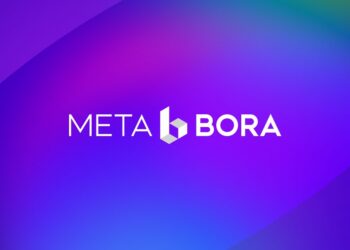Liquidity is an issue with DeFi protocols, undermining DAOs and many other elements of DeFi.These platforms have to stretch liquidity thinner, and this may affect the projects they develop and offer users. The WOO Network was developed to solve this issue. Investors who are restricted to trading apps like Robinhood that offer crypto options but a limited selection of tokens to choose from can benefit from the concept of WOO Network.
This article extensively analyzes the WOO Network and how it connects smart liquidity to different platforms without being prohibitively expensive.
What is the WOO Network?
The WOO Network is a deep liquidity network that bridges the gap between centralized and decentralized finance by providing low-cost access to vast liquidity and trading opportunities.
Kronos Research created this platform to provide multiple protocols, both in the DeFi and CeFi sectors, with access to low-cost yield generation solutions. Kronos Research is a notable quantitative trading organization known for developing strategies to improve the cryptocurrency market. The WOO Network was created to alleviate the liquidity problems that crypto platforms experience.
Users can access a variety of services within the ecosystem, including WOOFi, WOO Ventures, and WOO X.
WOOFi is a decentralized exchange, while WOOX is a centralized exchange. WOO Ventures also invests in innovative cryptocurrency platforms.
Because of the high quality of its features, the network caught the attention of other major players in the cryptocurrency industry, like Binance, which invested in it.
Different Elements of the WOO Network
The WOO Network has several features, which will be discussed further below. WOO Network intends to provide CeFi and DeFi platforms access to strategies for improving their order books, allowing them to better serve their users and potentially compete with major crypto exchanges.
- WOO Ventures
WOO Ventures is the component of the WOO ecosystem dedicated to investing in innovative crypto projects. This division aims to foster cordial relationships and partnerships between WOO Network and other platforms. They interact with works that are unrelated to the network’s or its users’ interests. The division’s primary role is to seek profitable investments, and once profits are made, they share a portion of them with users holding the native token of the WOO Network.
- WOOFi
WOOFi is the network’s decentralized exchange, and it utilizes the Automated Market Maker mechanism. WOOFi is an AMM based on the Binance Smart Chain that regulates prices through the Synthetic Proactive Market Making system. This decentralized exchange differs from traditional AMMs in that it does not use the standard Product Market Marker (PMM).
Users on this network have access to many features, such as regular decentralized swapping, staking, and yield farming.
The AMM uses a Synthetic Proactive Market Making system, therefore, prices are determined by scanning the order books of popular custodial trading platforms and using a model to calculate the price that it should charge its users. WOOFi utilizes data oracles to access the required data.
WOOFi also comes with a staking option that rewards users that lock their tokens up on the platform to earn returns.
Finally, yield farmers can benefit from compounding their interest by depositing their liquidity pool tokens in WOOFi.
- WOO X
This is a centralized trading platform that provides low fees and robust liquidity. WOO X is a CeFi trading platform with solid liquidity that enables customers to trade efficiently.
Due to the market’s robust liquidity, traders do not need to be concerned about unsafe levels of slippage. Buyers can purchase tokens without fear of price fluctuations, and sellers can easily convert their crypto to other tokens.
WOO X gas fees are based on a tiered structure, which allows customers to reduce their gas fees by joining a higher tier system. To get to Tier 2, users must stake 1800 WOO on WOO X.
WOO X is versatile in that users can customize their dashboard to include the features they desire. This centralized exchange has the Trading View feature, which includes charts, graphs, and other technical elements.
Benefits of Holding the WOO Token
The WOO token is the ecosystem’s utility token, granting users access to the platform’s incredible centralized and decentralized finance functionalities. The token is available on several networks, including NEAR, Fantom, and Ethereum.
Holding WOO tokens comes with some perks, which are detailed below.
- Collateral
The WOO token is significant in the DeFi space because it can be used as collateral on Sushi and other lending platforms.
- Yield farming rewards
Users can earn WOO tokens by providing liquidity in the pools on the WOO Network.
- Trading rewards
Holding the WOO token provides users access to free withdrawals, lower trading fees, and much more. By staking the WOO token, users get lower gas fees and increased trading limits.
- Earning Yields on Investments
Users that stake their WOO tokens will be able to profit from the investments made by WOO Ventures, particularly those in their early stages.
After a designated period, the ventures distribute the profits to stakeholders.
- Participating in governance
The user can participate in the governance mechanism as a holder of the WOO token. They can submit proposals and vote on prospective modifications.
By staking on WOO X and WOOFi, the user can participate in the governance mechanism. Users who do not do the above-mentioned must have at least 1,800 WOO in their wallet before they can vote on proposals.
Token Burning System
WOO Network regularly burns their native token. Typically, they buy back the tokens with roughly half of the platform’s revenue and burn them.
WOO Network’s Trade-to-Earn Feature
The WOO Network introduced the Trade-to-Earn concept, which is available on WOO X. This feature rewards users that stake their tokens with rebates or discounts while trading manually.
According to WOO Network, below are examples of how this works.
“Taker Rebate Example: Assume on January 1st, you traded $1M in manual taker volume on Jan 1st and the daily TWAP price of WOO was $0.5. If you are a Tier 4 staker and earn a 0.15 bps taker rebate, then you will receive (1,000,000*0.000015)/0.5 = 30 WOO at 00:00 UTC on Jan 2nd.
Yield Calculation Example: Assume you are a Tier 3 staker with 150,000 WOO staked and used the max rebate cap of $1,750 each month. Then assuming the average price of WOO was $0.5, the T2E APR obtained would be ((1,750/0.5)*12)/150,000 or roughly 28%.”
In Conclusion,
- The WOO Network addresses liquidity issues in both decentralized and centralized finance platforms.
- Users gain access to benefits by holding the token.
- WOO Network offers features such as WOO X, WOOFi, and WOO Ventures.
- The WOO token is the WOO Network’s native token.
If you would like to read more articles like this, visit DeFi Planet and follow us on Twitter, LinkedIn, Facebook, and Instagram.





















